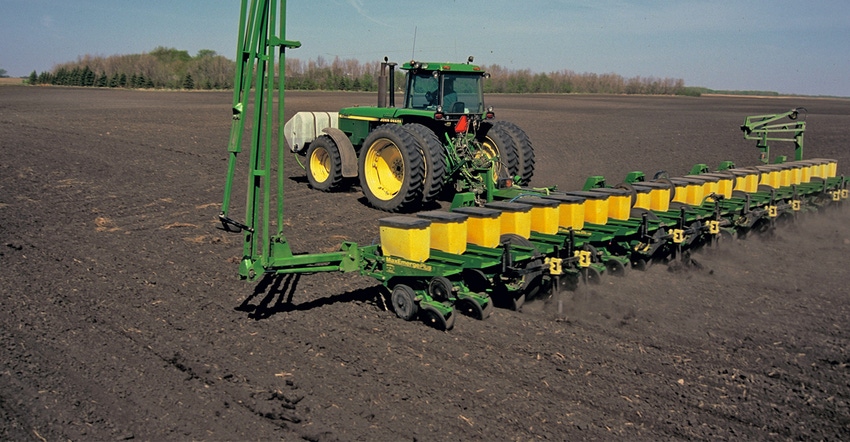March 27, 2018

When the weather outlook is for a cool spring, it’s best to be prepared for cold corn planting. Here are seven things to know:
1. Research shows the optimum period for planting corn in North Dakota and South Dakota, regardless of the region of the state, is during the first two weeks of May. However, planting corn into cold soils may not be the best idea, even if the calendar suggests it is the recommended time for planting
2. Corn requires soil temperatures above 50 degrees F before it will begin to grow, even if there is adequate soil moisture for germination. As a general rule, corn should not be planted until the soil temperature (measured at 2 inches between 7-8 a.m.) approaches 50 degrees F. In cold soil conditions (below 50 degrees F), seeds will readily absorb water but will not initiate root or shoot growth, which leads to seed rot and poor emergence.
3. Corn requires an accumulation of about 125 growing degree-days (GDDs) before it emerges. This relationship is more predictive if you use the soil temperature rather than the air temperature in calculating GDDs.
4. Corn seedlings that take longer to emerge because of cold soils are at a greater risk of developing a seedling disease, and are more likely to have greater variability in emergence dates. Poor uniformity in emergence can affect yield, as late emergers usually carry a yield penalty because they are never able to catch up in size to their earlier-emerging neighbors.
5. Imbibitional chilling injury can occur when corn is planted when it is cold. Imbibitional chilling is when the corn seed absorbs water that is colder than 50 degrees F. The colder the water, the greater the risk of this type of injury. Cell membranes in the seed can rupture at low temperatures, causing cell contents to leak and providing a good source of food for pathogens. The worst-case scenario is when corn is planted into a relatively cold soil that then receives cold rain or snow shortly after planting. A heavy, cold rain after planting seems to increase the chances of imbibitional injury because it overwhelms the ability of the soil to warm the water before it reaches the seed.
6. In addition to poor stands, cold injury may cause the corn mesocotyl to corkscrew or the coleoptile and true leaves to emerge from side of coleoptile. Plants that developed from these seedlings may be stunted and have distorted leaves, which will develop more slowly than normal plants. Sometimes these injured seeds will produce a radicle but not a coleoptile.
7. If circumstances force planting before soil temperatures reach 50 degree F, talk to an agronomist or seed dealer to make sure you have a more cold tolerant hybrid and the seed is treated with a fungicide.
Sources: Joel Ransom, NDSU Extension agronomist and SDSU iGrow, Corn Planting Guide
You May Also Like




